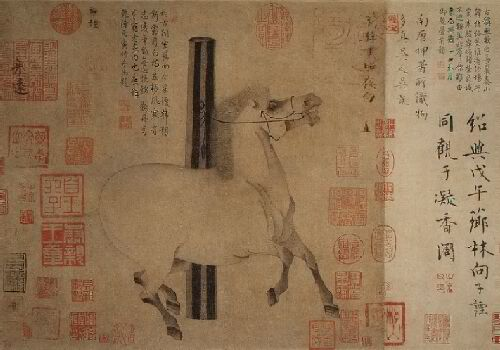The Silk Road: How Ancient Trade Routes Shaped the Modern World
The Enduring Legacy of the Silk Road: Connecting Ancient Worlds and Shaping Global Trade

Introduction: Unraveling the Silk Road's Profound Impact
Discover the fascinating history of the Silk Road, an iconic network of ancient trade routes that served as a vital bridge between the East and West for centuries. Far more than just a path for silk, this vast network, stretching over 4,000 miles, was a powerful conduit for the profound exchange of goods, innovative ideas, diverse religions, and rich cultures, fundamentally shaping the civilizations it connected. This article delves into the origins, significant impact, and enduring legacy of the Silk Road, exploring its evolution, the diverse commodities traded, its role in cultural diffusion, and its eventual transformation, ultimately highlighting its continued relevance in our modern world.
Origins and Development: The Silk Road's Journey from Han to Tang Dynasties

The origins of the Silk Road are deeply rooted in China's Han Dynasty (207 BCE – 220 CE). It began when Emperor Wu of Han sent Zhang Qian on diplomatic missions to secure alliances against the Xiongnu nomads. Though the military alliances didn't fully succeed, Zhang Qian's journeys inadvertently pioneered new trade routes into Central Asia, sparking significant international exchange. Initially, China's most prized export was silk, which was in high demand across the Roman Empire and other Western civilizations. In return, China imported valuable commodities such as horses, wool, linen, glass, and precious metals.
The stability of these ancient trade routes varied over time, often disrupted by political fragmentation and regional conflicts. However, the Silk Road experienced a remarkable golden age during the Tang Dynasty (618-907 CE). The Tang era's strong central government and relative peace significantly boosted trade and fostered widespread cultural interaction. Major cities like Chang'an (now Xi'an) transformed into thriving cosmopolitan centers, drawing merchants, scholars, and religious leaders from all corners of the world.
Beyond Silk: The Diverse Commodities of the Silk Road

While silk is famously linked with these ancient trade routes, the Silk Road actually enabled the exchange of an astonishingly diverse array of goods. From China, valuable commodities such as tea, porcelain, exotic spices (like cinnamon and ginger), and precious jade traveled westward. Central Asian regions contributed essential items like horses, finely woven carpets, and various dried fruits. In return, the West supplied wool, linen, gold, silver, ivory, and a range of manufactured products.
Significantly, the Silk Road’s extensive trade network wasn't solely for luxury items. Vital commodities like salt, sugar, and various agricultural products were also frequently traded, directly improving the daily lives of communities situated along these routes. Furthermore, the mutual exchange of agricultural techniques and new crops, including alfalfa and grapes, was crucial for regional advancement and development.
The Silk Road: A Highway for Ideas and Religious Diffusion
The Silk Road acted as a formidable engine for cultural diffusion across vast distances. Buddhism, which originated in India, notably spread eastward along these ancient routes, becoming a dominant religion in regions like China, Korea, and Japan. Similarly, other significant faiths, including Nestorian Christianity, Manichaeism, and Islam, also traversed the Silk Road, establishing new communities and profoundly influencing local belief systems.
Beyond the spread of religions, the Silk Road was instrumental in the global exchange of scientific knowledge, diverse artistic styles, and groundbreaking technological innovations. Crucial Chinese inventions such as papermaking technology, gunpowder, and the magnetic compass eventually made their way to Europe through the Silk Road, bringing revolutionary changes to Western societies. Conversely, valuable Western medical knowledge and advanced astronomical observations were also introduced to the East via these same interconnected routes.
Decline and Enduring Legacy: The Silk Road's Transformation with Maritime Trade

The extensive overland trade of the Silk Road began its gradual decline around the 15th century, primarily due to the emergence and rapid expansion of maritime trade routes. European powers, driven by a desire for more direct access to valuable Asian goods, pioneered new sea routes around Africa and across the Indian Ocean. These oceanic paths proved to be generally faster, more cost-effective, and less vulnerable to the political instability that often plagued the overland Silk Road. The fragmentation of the powerful Mongol Empire, which had previously offered crucial security along the routes, further accelerated its decline.
Despite its eventual decline as the primary global trade artery, the Silk Road’s profound legacy persists. It left an indelible mark on the cultures, economies, and societies of all the diverse regions it interconnected. The historical bonds and interconnectedness forged along the ancient Silk Road continue to subtly influence contemporary geopolitical relationships and global dynamics.
The Modern Silk Road: Exploring the Belt and Road Initiative (BRI)
In the 21st century, the spirit of the ancient Silk Road has seen a contemporary resurgence with China's launch of the ambitious Belt and Road Initiative (BRI). This monumental infrastructure development project aims to foster new connections, linking China with vast regions of Asia, Africa, and Europe through an expansive network of modern railways, vital roads, strategic ports, and other essential infrastructure. Although the BRI has garnered a mix of enthusiastic support and cautious skepticism, it undeniably represents a concerted effort to capitalize on the historical legacy of the Silk Road to enhance global economic and political cooperation.
Conclusion: The Unforgettable Impact of the Silk Road

The Silk Road remains an unparalleled testament to the profound power of international trade and vibrant cultural exchange throughout history. Far more than just a series of commercial pathways, this ancient network served as a dynamic catalyst for groundbreaking innovation, widespread religious diffusion, and the essential interconnectedness of diverse civilizations. Its eventual decline did not diminish its monumental impact; instead, it laid crucial foundations for future global interactions and continues to inspire grand modern initiatives, such as the Belt and Road Initiative, underscoring the enduring and remarkable relevance of this historic network in our contemporary world.
```
